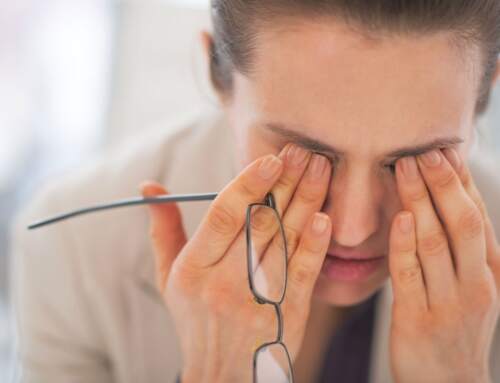Have you ever noticed that your second toe appears longer than your big toe, or perhaps someone you know has this unique foot shape? This characteristic feature is more than just a peculiar trait; it’s a structural difference in the foot that can have significant implications for your overall foot health and comfort. Known scientifically as Morton’s Foot Syndrome, this condition is named after Dr. Dudley Morton, who extensively studied the structure and function of feet.
Understanding Morton’s Foot is crucial, not just for those who have it, but for anyone interested in maintaining good foot health. This condition, characterized by a longer second toe and a shorter big toe, can lead to various foot problems, including Morton’s neuroma, stress fractures, and plantar fasciitis. It can also contribute to more general musculoskeletal pain due to the altered distribution of body weight and pressure across the foot.
The way our feet carry us through daily activities is fundamental to our overall well-being. Thus, recognizing and properly treating Morton’s Foot is not only about addressing a foot condition but also about enhancing our quality of life. Whether you’re a professional athlete, someone who enjoys occasional jogs, or simply someone who spends a lot of time on their feet, understanding the implications of Morton’s Foot is essential. It’s a step towards ensuring that your feet, those incredible structures that support your entire body, are given the care and attention they deserve.
Anatomy of the Foot
The human foot is a complex and remarkable structure, designed to provide support, balance, and mobility. It comprises 26 bones, 33 joints, and more than a hundred muscles, tendons, and ligaments. Understanding the basic anatomy of a normal foot is key to appreciating the nuances of conditions like Morton’s Foot.
Bones of the Foot:
- Metatarsal Bones: These are the long bones in the middle of your foot. There are five metatarsal bones, one for each toe, connecting the ankle to the toes. They play a crucial role in balance, weight-bearing, and walking.
- Phalanges (Toe Bones): Each toe has three phalanges, except for the big toe, which has two. These bones allow the flexibility and movement of the toes.
- Tarsal Bones: Located in the rear part of the foot, these seven bones form the heel and the back of the arch. The largest tarsal bone, the calcaneus, forms the heel.
- Sesamoid Bones: These are small, pea-shaped bones embedded in the tendon of the big toe. They help with weight distribution and leverage when you move your big toe.
Joints and Ligaments:
- The foot joints, where bones meet, allow for movement and flexibility. Ligaments, which are bands of tough, elastic tissue, connect the bones and stabilize the joints.
Muscles and Tendons:
- Muscles in the foot are responsible for its movement. The Achilles tendon, the largest tendon in the foot, connects the heel bone to the calf muscles and is crucial for running, jumping, and standing on tiptoes.
The Arch of the Foot:
- The foot’s arch plays a vital role in how we walk. It absorbs shock, distributes weight, and helps in balance. There are two primary arches – the longitudinal arch (runs lengthwise) and the transverse arch (runs across the foot).
In a normal foot, these components work harmoniously to provide the necessary support and flexibility for everyday activities. The architecture of the foot, particularly the length and alignment of the metatarsal bones and the arch, plays a significant role in its function and overall health. When these aspects are altered, as in Morton’s Foot, it can lead to various foot conditions and discomfort. Understanding this anatomy helps in recognizing the significance of Morton’s Foot and its impact on the foot’s normal function.
What is Morton’s Foot?
Morton’s Foot, a term that often brings to mind the image of a longer second toe overshadowing a shorter big toe, is a specific foot structure that has garnered attention both in the medical field and in cultural references. This condition, also known as Greek Foot or Royal Toe, presents a fascinating deviation from the typical foot structure.
Definition and Characteristics:
- At its core, Morton’s Foot is defined by the relative length of the metatarsal foot bones. In a typical foot structure, the first metatarsal bone, connected to the big toe, is the longest. However, in Morton’s Foot, this order is reversed – the second metatarsal bone, leading to the second toe, is longer than the first. This variance in bone length results in the second toe extending further than the big toe, giving the foot its distinctive appearance.
- Morton’s Foot is not just about aesthetics; it’s a structural difference that can significantly affect the mechanics and function of the foot. This condition was extensively studied and brought to prominence by Dr. Dudley Morton, an American physician and researcher whose work highlighted its potential impact on overall foot health.
Structural Differences Compared to a Normal Foot:
- In a normal foot, the longer first toe helps in evenly distributing body weight and pressure during walking or standing. The first metatarsal head bears a considerable amount of load, assisting in maintaining balance and stability.
- In contrast, Morton’s Foot changes this dynamic. The shorter first metatarsal bone shifts the pressure to the second metatarsal head, which is not typically designed to handle such excessive pressure. This altered pressure distribution can lead to various foot problems, including pain in the ball of the foot, development of calluses, and increased risk of stress fractures. The change in pressure points also affects the arch of the foot, potentially leading to arch pain and other related conditions.
Understanding Morton’s Foot goes beyond recognizing a difference in toe length. It’s about comprehending how this seemingly minor structural variance can have a ripple effect on one’s foot health, comfort, and overall well-being. Whether you refer to it as Morton’s syndrome, Greek toe, or simply a quirky foot shape, this condition embodies the intricate relationship between our body’s structure and its function.
Symptoms and Diagnosis
Individuals with Morton’s Toe often experience a range of symptoms that extend beyond the foot itself, affecting their overall posture and gait. Recognizing these symptoms is crucial for an accurate diagnosis and effective treatment.
Expanded List of Common Symptoms:
- Pain in the Ball of the Foot: This is often due to the increased pressure on the second metatarsal head.
- Development of Calluses: These usually form on the second metatarsal pad, indicating the area of excessive pressure.
- Arch Pain: Altered foot mechanics can lead to discomfort in the arch area.
- Increased Risk of Hammer Toes: The toe may bend at the middle joint due to uneven pressure distribution.
- Bunions: Morton’s Foot can also contribute to the development of bunions, as the structural imbalance caused by a shorter first metatarsal bone and a longer second toe can lead to abnormal stress on the joints, potentially causing the big toe to angle towards the second toe and resulting in the formation of painful bunions. [Read more about bunions]
- Foot Fatigue and Discomfort: General fatigue is common due to the strain on various foot muscles and tendons.
- Knee Pain/Problems: Altered foot biomechanics can lead to knee issues, as the body tries to compensate for the uneven distribution of pressure.
- Neuroma, Specifically Morton’s Neuroma: This painful condition involves a thickening of the tissue around the nerves leading to the toes, often exacerbated by Morton’s Foot.
- Muscular Compensation: The body may compensate for the uneven pressure distribution, leading to muscular imbalances and discomfort in the foot, legs, and even the lower back.
Diagnosing Morton’s Foot:
- Clinical Examination: Involves a visual inspection for a longer second toe, calluses, and any toe deformities.
- Gait Analysis: Assesses how Morton’s Foot affects walking and overall posture.
- Imaging Tests: X-rays or MRIs may be used to confirm the diagnosis, revealing the relative lengths of the metatarsal bones and other related issues.
- Physical Assessment: A thorough assessment by a physical therapist can help in understanding the full impact of Morton’s Foot on daily activities.
An accurate diagnosis of Morton’s Foot hinges on a holistic assessment that considers not just the foot’s structure but also the related symptoms and their impact on the individual’s overall health and mobility.
Overpronation and Its Implications in Morton’s Foot
Morton’s Foot can often be accompanied by or lead to overpronation, a common foot motion issue that can have significant effects on overall foot health and function.
Understanding Overpronation:
- Definition: Overpronation refers to the excessive inward rolling of the foot upon landing while walking or running. It’s a deviation from the normal amount of pronation that occurs during the gait cycle.
- Causes: Overpronation can be caused by various factors, including foot structure, weak arches, and wearing unsupportive footwear. In the case of Morton’s Foot, the altered structure due to the shorter first metatarsal bone can contribute to overpronation.
Implications of Overpronation in Morton’s Foot:
- Increased Stress on the Foot and Ankle: Overpronation can place additional stress on the foot and ankle, exacerbating the discomfort caused by Morton’s Foot.
- Aggravation of Symptoms: Those with Morton’s Foot may find that overpronation worsens their existing symptoms, such as pain in the ball of the foot or arch discomfort.
- Higher Risk of Foot Problems: Overpronation can increase the risk of developing other foot-related issues, including plantar fasciitis, heel pain, and Achilles tendonitis.
- Impact on Gait and Posture: Overpronation can affect the entire alignment of the lower body, leading to postural issues and pain beyond the feet, including in the knees, hips, and lower back.
Addressing Overpronation in Morton’s Foot:
- Proper Footwear: Choosing the right shoes with adequate support, especially in the arch area, can help mitigate the effects of overpronation. Shoes with a wide toe box are also beneficial for those with Morton’s Foot. Avoid ill-fitting shoes, high heels or tight shoes that create constant pressure.
- Custom Orthotics: Custom-made orthotics designed to address the specific needs of someone with Morton’s Foot can be highly effective in managing overpronation.
- Metatarsal Pads: Incorporating metatarsal pads as shoe inserts can provide additional support and cushioning for the ball of the foot, especially beneficial for those with Morton’s Foot, as these pads help redistribute pressure away from the overstressed second metatarsal head, alleviating pain and discomfort.
- Physical Therapy and Exercises: Engaging in targeted exercises and physical therapy can strengthen foot muscles, improve arch support, and correct overpronation. [5 Steps to Strong Feet]
- Specialized Care: In some cases, consulting a foot specialist or healthcare provider is necessary, especially when experiencing severe pain or complications like ingrown toenails or neuromas.
Understanding the interplay between Morton’s Foot and overpronation is essential for effective treatment and management. Addressing overpronation not only alleviates foot discomfort but can also have positive effects on overall posture and mobility, enhancing the quality of life for individuals with Morton’s Foot.
Embracing Your Unique Foot Structure and the Benefits of Massage Therapy
Morton’s Foot is more than just an anatomical quirk. It’s a common condition that, while unique, requires thoughtful management to ensure comfort and optimal functionality in daily activities. Understanding the intricacies of this foot structure is vital.
An often-overlooked but highly effective treatment for the discomfort associated with Morton’s Foot is massage therapy. Massage can help alleviate the stress and tension in the foot muscles and tendons caused by the altered pressure distribution. It aids in improving circulation, reducing foot pain, and promoting healing in the foot, especially in areas experiencing excessive pressure like the ball of your foot and the base of the second toe.
At Body Ache Escape, we specialize in providing tailored massage therapies that cater to specific conditions like Morton’s Foot. Our experienced therapists understand the unique challenges posed by this condition and are adept at delivering relief and comfort through targeted massage techniques.
We invite you to schedule your massage session with us at Body Ache Escape. Let us help you embrace your unique foot structure and guide you toward a path of reduced pain, improved foot function, and overall well-being. Remember, caring for your feet is not just about addressing a condition; it’s about enhancing your quality of life. Book your session today and take the first step towards a more comfortable and fulfilling daily experience.





